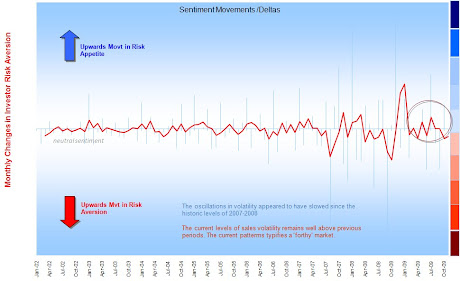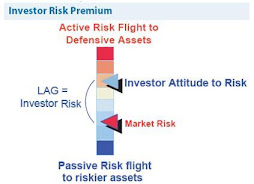"certainly a lot of noise around about absolute return as a DC solution at the moment. Personally, I'm a bit wary of using absolute return as a default fund for group pension scheme members as the nature of the fund would have to be explained because there is no guaranteed return. This would require explanation that the manager is buying derivatives with their money with the broad aim of achieving XYZ. For most scheme members, this would be too complicated."
Hard to track and getting harder by the minute. The manager has to use what we call the 'opportunity set': a broader range of asset types including leveraged loans, derivatives, swaps, asset backed securities 'ABS', mortgage backed securities 'MBS', subordinated debt etc at the sharper end of the debt market. In those markets you also have dark liquidity pools (unquoted markets) and plenty of OTC (over-the-counter contracts).. complex pricing, lots of default risk, dollar roll risk, currency risk, lots of liquidity risk.
Putting members aside for a second - for those who administer pensions I think confusion will be common to both DC and trust-based schemes - how many trustees will 'get' absolute return, let alone be in a position to set a statement of investment principles around them is hard to say. It places much more onus on ALM, good for the EBCs and consulting actuaries.. bad for costs, which at some level will need to be passed back into the employer or the employee. The pressure on scheme managers and trustees is set to rise as more and more 'governance' is introduced.
I helped bring an Abs Return fund to market in 2008; plus in the thick of it when the first batch of Abs Return funds imploded around the credit crunch and tried to get one rated with S&P at the same time. I recall it involved lots of time spent tracing volatilities/spreads in LIBOR v SONIA, 1yr v 3yr horizons.. lots of pitfalls from a TCF perspective also. The lead analyst for S&P was writing various scathing reports for the press - safe to say we put the rating idea on ice..
Coincidentally I also sat on EFAMA's EFCF working committee back then (on and off for about 5 yrs) and we debated and created some ground rules and definitions for 'Absolute Return'. Alas the FSA/IMA,NAPF,ABI are taking their time to adopt these sets of definitions, fist set down in 2007-08, which I think is leaving too much latitude in the sector. At that time the underlying investments were disparate and varied greatly - they still are with no common benchmark - very much a 'wild west' facilitated largely by UCITS3. It felt like the hedge fund days all over again but we'll see if the market is tightened with UCITS4..The only common denominator being LIBOR or EONIA avg. targets +30bps, +50bps and so on.. However the Dutch NL-AFM 'GUISE' model is probably the most developed in terms of identifying risks in these and other funds. Interestingly the Dutch system scores anything but G'teed as 'High Risk'..
The alternative is structured products - G'teed/Protected funds or bonds. These of course pass the risk onto a counter-party or reinsurer and there were problems in 2008 via counter-party defaults, as assets were marked-to-market. Target maturity funds are useful as they are 1) simpler than Absolute Return and 2) can be used in a maturity ladder against employee expected retiral dates. The irony is that Abs Return (aka portable alpha) strategies started in the occupational market in the early-mid 2000s and were then subsequently 'rebranded' into Abs Return (the flip side being 130/30, 1xo/xo funds).
What were once seen as fairly staid, low risk investments suddenly became sexy, repackaged and marketed in an entirely new way as a new asset class (a means to beat the 'system'). The misgiving was that few clients undergo an Asset-Liability review ('ALM') as would occur in a pension scheme - this is a real oversight since the way the fund is invested is blind of the goals and circumstances of the investor. This would be fine if the level of variance possible year on year was tightly controlled but that's not always the case, with enough flexibility in the investment objective to allow the manager a 'get-out' if the going gets tough and the investor not leg to stand on. Barmy!
What seems clear is that there is a very distinct mood change that feels similar to when DC schemes moved away from Gilts, then again Corp Bonds in favour of Equities. I'm keeping my eye on IPE.com, the occupational pension website, to track this shift across Europe. Much of this is going to be fuelled by employer DB schemes waving the white flags after the last market drawdown.
There are returns to be had in Absolute Return funds but they are far from absolute!




No comments:
Post a Comment
Note: only a member of this blog may post a comment.